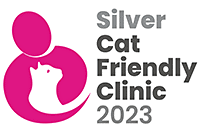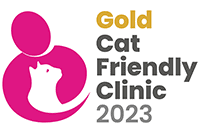Shires Vets are proud to be able to offer your pet a wide range of orthopaedic procedures. These operations are largely carried out at the Stone surgery where we have the facilities to hospitalise and monitor your pet through their recovery.
We are experienced in all aspects of general practice orthopaedics from broken bone repairs, reduction of dislocated joints and cruciate ligament surgery through to amputation which is sadly the only option for some badly damaged limbs.
Broken or Fractured Bone repair
Broken or fractured bones may be repaired in a variety of ways depending on the age or size of the patient or the position of the injury. Young, light animals with simple fractures may only require a simple splint or cast but with more serious breaks we have the ability to use metal bone plates, internal bone pins or external fixators (scaffolding) to stabilise the bones.
Use of technology such as digital radiography (x-ray), CT and MRI Scans
Shires Vets are fortunate to have well established links to local referral centres who we can contact for specialist advice or refer your pet to when complicated orthopaedic problems are encountered such as fractures to the pelvis or spine. At Shires Vets we have an in-house, state of the art, digital radiography (x-ray) machine allowing us to accurately diagnose the majority of orthopaedic problems however some cases may require advanced imaging techniques, such as CT or MRI scans, and these patients will require external referral.
Cruciate ligaments damage
The most common causes of hind limb lameness in dogs is damage to the cruciate ligaments inside the knee joint. This is a common problem amongst human footballers and skiers where a sudden overextension of the knee snaps the ligament. This same trauma can happen with dogs but we also see a chronic degeneration of the ligament and tears to the shock absorbing cartilages causing instability and pain. There are many ways to treat cruciate ligament disease ranging from rest and anti-inflammatory drugs in some smaller dogs to surgical repair in larger breeds. Shires Vets can offer a 'mock ligament' repair using strong nylon or a more complex repair called a tibial tuberosity advancement (TTA) which alters the joint dynamics alleviating instability and pain. The latter procedure usually results in more rapid and reliable recovery but choice of procedure can be discussed on an individual basis taking into account breed, expected athletic requirement and available finance.
Post-operative care
Post operatively most orthopaedic patients will require a period of cage or house rest to allow healing without great stress demands on the bones and joints. Some will have bandages on that may require sedation to be changed, depending on the pet’s temperament. Post-operative infections are thankfully rare, but serious when they do occur. Both our Stone and Eaton Park operating theatres are modern and purpose built to allow regular deep cleaning and this combined with thorough pre-operative patient preparation keeps our rate of post-operative infections to a minimum. We will often need to repeat radiographs (x-rays) after a period of recovery to ensure healing is complete or progressing as expected.
Pet Insurance
Orthopaedic surgery can be costly when implants, radiographs, dressing changes and surgical time are factored in. At Shires Vets we are keen for you, our clients to take out comprehensive pet insurance for your animals to help you cover the costs of unexpected bills and ensure we can always offer you the gold standard treatment - please see separate information page on pet insurance.






